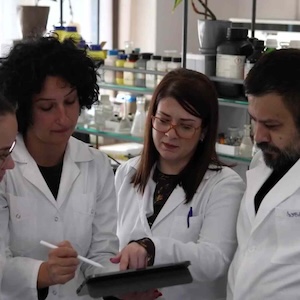The food industry drives the global economy, but it also puts a significant drain on natural resources. Meanwhile, 828 million people globally struggle to obtain sufficient food. Sustainable food systems—agroecology, organic agriculture, and agroforestry—will enhance food security for everyone in the world. They can change every step of the process, from production and distribution to disposal. They are the key to economic sustainability and will protect the environment from further damage. But before we learn more about them, let's cover some background.
What Are Sustainable Food Systems?
A sustainable food system is a one that can equally distribute food among all people. According to the US Department of Agriculture (USDA), sustainable food systems will change how our society views food production. Currently, it is a linear progression that goes from farm to table.
The sustainable food system process provides a more comprehensive approach to farming, supporting sustainable agricultural practices to create safer environmental and social systems. The goal is a healthier approach to agriculture that doesn't harm plants while reducing food waste.
Why Are Sustainable Food Systems Important?
Despite the 828 million starving people on this planet, one-third of all food produced ends up going to waste, making food waste a significant source of greenhouse emissions throughout the world. A sustainable food system should be profitable while having a neutral or positive environmental impact.
The nature of the global market may also mean that manufacturers will move plants to areas where the environmental protections are lax and the economic costs are lower. That could exacerbate the existing problems because more influential nations will look for ways to transport that food into those countries, further straining resources and increasing fuel consumption and toxic emissions in transportation.
Sustainable food systems will address the problems associated with current agribusiness to find a solution that allows more people access to food without taxing environmental resources.
Benefits of a Sustainable Food Systems
Cracks in global food distribution clearly exist. However, sustainable food systems should close most of those cracks in various ways.
Water Security
Water is necessary for food systems' sustainability. The demand for these systems is forcing global leaders to address the water security issues that many in the world face. They are looking to better manage both water for irrigation and drinking water. The goal is also to prevent food production from polluting surface and groundwater, a factor reducing the availability of clean drinking water in many areas.
Strong Societies
Sustainable food systems distribute food equally among all people. That means societies that are suffering from food insecurity will get stronger. From Africa to Alabama, people who are not able to eat well and regularly will have access to healthy food.
Environmental Protection
Part of the goal of developing sustainable food systems is to protect the environment. Currently, food waste is a significant source of greenhouse gasses. Agriculture also contaminates surface and groundwater.
Economic Opportunities
Current food processing practices lead to water overuse and increased pollution. Funds currently devoted to combating these issues could be used elsewhere under a sustainable model. Additionally, sustainable food systems will create jobs in multiple industries, including agriculture, manufacturing and transportation. Poorer areas of the world will also be able to use food to generate income and create a more stable global economy.
Climate Change Resilience
Currently, food that is grown needs to be processed, transported and distributed. When you combine that with the impact of food waste disposal on greenhouse gasses, it's clear that sustainable food systems will help the environment. According to the United Nations, one-third of all greenhouse gasses related to humans involve food.
Food Security
The goal of sustainable food systems is not just to protect the environment, but also to ensure that people in the world without reliable access to healthy food can survive. Each year, 301 million children die because they don't have food to eat. Sustainable food systems will save lives.
Sustainable Food Systems
What are examples of sustainable food systems? There are an exciting number of sustainable food systems on the horizon designed to make the future brighter. But what is the most sustainable food system?
Agroecology
One of the best systems is agroecology. The Soil Association describes agroecology as sustainable farming that works with nature, not against it. It strives to balance plants, animals, people, and the environment.
Agroecology is a holistic approach to producing food. It is no longer possible to ignore the impact food production has on culture and the planet. By embracing sustainable food systems, we can address these issues in a way that serves the greater good.
It integrates the various challenges in food production, both plant and animal, to create solutions that benefit each. Agroecology recognizes the interactions between everything that inhabits the planet instead of having them work against one another. That means healthier plants, animals, and people and a more prosperous planet.
Agroecology creates an overarching framework that guides policy toward a sustainable future. It makes farming and ranching more efficient and makes better use of both private and public resources.
Agroforestry
Agroforestry is a sustainable agricultural practice that integrates trees into the farming system and has the potential to mitigate climate change. Trees absorb carbon dioxide from the atmosphere and store it in their biomass and in the soil. By incorporating trees into farming systems, agroforestry can help to sequester carbon, reduce greenhouse gas emissions, and promote climate resilience.
Agroforestry can involve both forests and orchards, with trees planted in rows or scattered throughout the agricultural landscape. The kinds of trees planted depend on the farmer’s intentions. A forest is generally planted with a high density of trees and usually managed for timber, biodiversity conservation, or recreation. Orchards may also provide benefits such as erosion control and biodiversity, but their management is typically focused on maximizing fruit or nut production.
One of the key benefits of agroforestry is the positive impact it can have on soil health. Trees help to retain soil moisture, prevent soil erosion, and improve soil fertility through the deposition of organic matter from their leaves and branches. This, in turn, can lead to increased crop yields and more productive pastures for livestock. Livestock can help to cycle nutrients through the agroforestry system by consuming forage and producing manure, improving soil fertility and promoting the growth of trees and crops. Certain livestock species, such as chickens and ducks, can help to control pests and weeds in agroforestry systems by consuming insects and weed seeds.
In turn, agroforestry can benefit a wide range of livestock species, including cows, sheep, goats, pigs, poultry, and even bees. The specific benefits will depend on the type of agroforestry system and the management practices used, but some of the key ways that livestock can benefit from agroforestry include providing shade and shelter, which reduces heat stress and improves the animals’ welfare; increasing the nutritional quality and diversity of the animals’ diet through increased foraging and fodder that can supplement their usual feed; and by providing habitats for various species, including birds, insects, and mammals, enhancing ecological resilience and contributing to the conservation of natural resources.
Organic Agriculture
Organic agriculture is a holistic and sustainable approach to farming that emphasizes the use of natural inputs and practices to promote soil health, biodiversity, and ecological balance. In organic farming, farmers avoid using synthetic pesticides and fertilizers, genetically modified organisms (GMOs), and antibiotics in animal production. Instead, they rely on practices such as crop rotation, cover cropping, composting, and biological pest control to maintain soil fertility and manage pests and diseases.
One of the key benefits of organic agriculture is its positive impact on soil health. Organic farming practices promote the growth of beneficial microorganisms and improve soil structure and water-holding capacity. This, in turn, can lead to higher crop yields and better crop quality. Organic farming also reduces soil erosion and nutrient runoff, which helps to protect water quality and aquatic ecosystems.
Another benefit of organic agriculture is its positive impact on biodiversity. By avoiding the use of synthetic pesticides and fertilizers, organic farming supports a diversity of plant and animal species, including beneficial insects, pollinators, and soil microbes, leading to more resilient and productive agroecosystems.
In addition to its environmental benefits, organic agriculture can also economically benefit farmers and rural communities. Organic farming often requires more labor-intensive management practices than conventional farming, which can create jobs and support local economies. Organic products also often command a premium price in the marketplace, helping increase the profitability of farming operations.
Learn More Today
Interested in making a difference in sustainable food system work? The U of M offers a Master of Professional Studies in Applied Sciences Leadership to put you on the right path. This program consists of two graduate-level certificates and six synthesizing credits, allowing you to stack your credentials to increase your employment opportunities and your income. Or try move to the leading edge of sustainable food systems with a Master of Professional Studies in Horticulture. This 30-credit master’s program is an applied degree, meaning you’ll be able to directly apply what you learn to growing and managing plants.
Consider, also, the Leadership for Science Professionals Certificate, perfect for busy professionals who want to advance their career without the time commitment of a full graduate program. Find out more by visiting our website today.
Sources:










